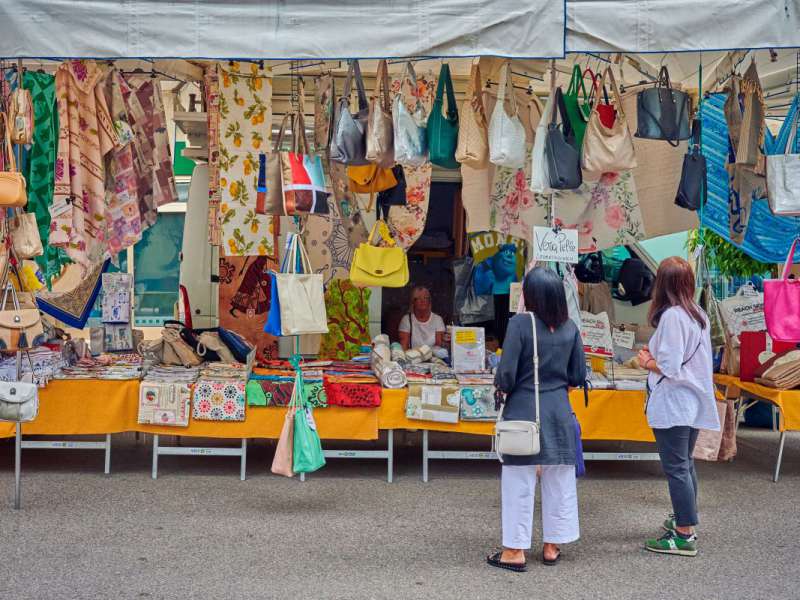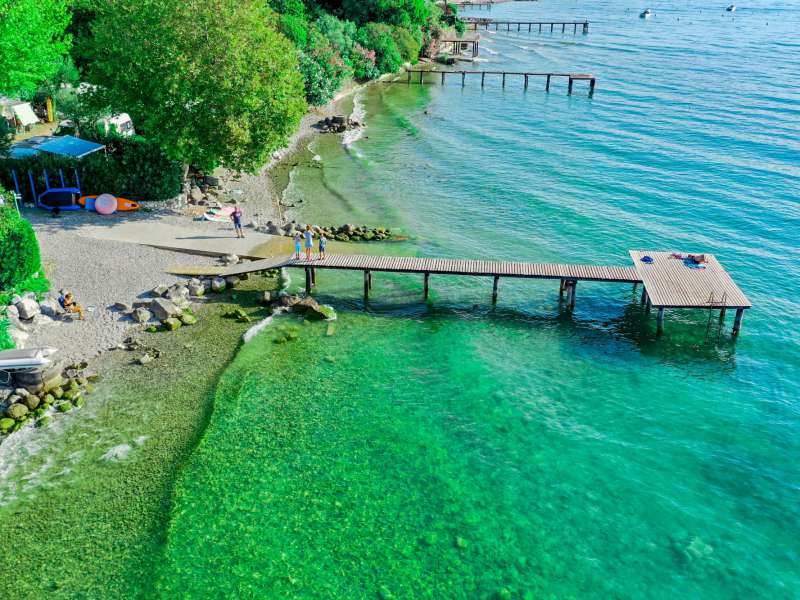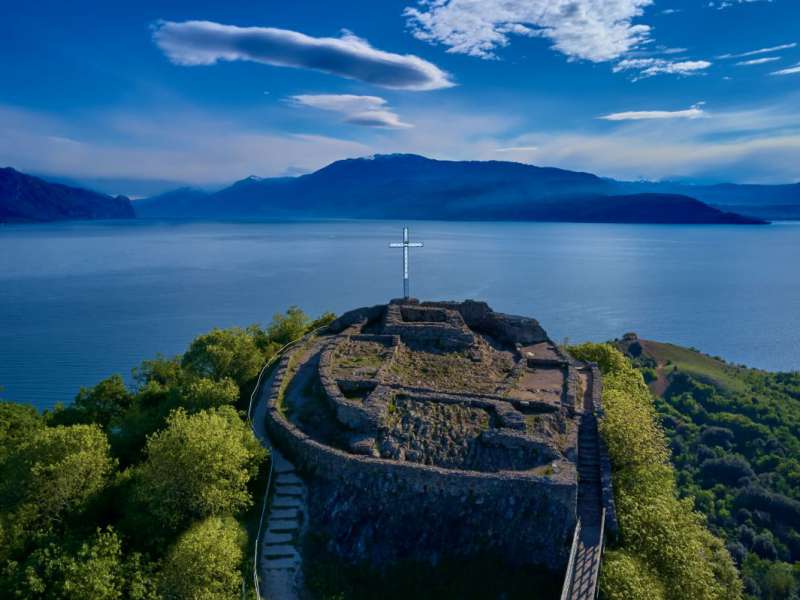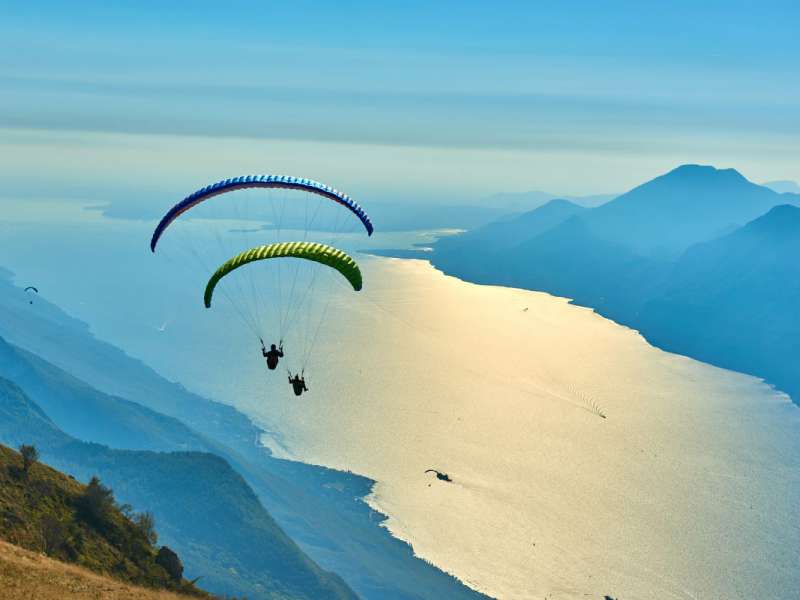This is one of the products we, the people from Lake Garda, are most proud of: among the oldest and most valuable, the extra virgin olive oil from our lake, with its fragrance of green almonds and wild herbs, is one of the most famous and fine in the world.
Evidence of the high quality of this product dates back to 643 A.D., when an edict was made to protect olive trees from neglect and damage throughout the Lake Garda area.
From the Renaissance onwards, the countryside in these areas began to develop the characteristic features of the agrarian landscape, with the construction of terraces overlooking the waters of the lake, designed to accommodate precisely this type of cultivation and to develop its fertile production.
For these reasons, one side of our lake is now known as the " Olives Riviera".
Today, Garda PDO Olive Oil is one of the top five PDO olive oils in Italy and is exported and awarded all over the world.
In this article we want to talk about our oil, a product that we love very much and that we take care of in every detail, production after production, for three generations.
But let's take a step back...
WHAT IS PDO OIL?
Literally, the acronym stands for 'Denominazione di Origine Protetta' (Protected Designation of Origin), a mark of protection used by the European Union to identify an agri-food product whose characteristics are closely linked to the peculiarities of the territory in which it is produced.
This label highlights not only the place of origin of the raw material, the olive in this case, but also the entire procedure, which must take place through pre-established processes and within the territory where the raw material is grown and harvested.
When we taste a Garda PDO oil we are therefore certain of the very high quality that this product offers us, but above all we are preparing to experience a wonderful journey of flavours, knowledge and fragrances of our wonderful territory.
But beware: if PDO means quality, it cannot be taken for granted that a product without this denomination is not as good or even better. In fact, as in any production, love and competence for the work are the most rewarding aspects!
How and when are the olives harvested?
To produce a good oil, the first rule is to have healthy olives and harvest them at the right time of ripening.
Recognising the correct time is therefore essential so that the fruit is neither too unripe nor too ripe. The correct stage for harvesting the fruit is called Invaiatura, which is the moment when the olive turns from green to purple.
On Lake Garda the olives usually start to be picked from the second half of October, a period that can vary depending on the climate and the year, and it is essential that the harvest is carried out with the utmost care: the fruit must be removed from the tree with great delicacy, a damaged fruit in fact could suffer trauma and degrade quickly.
In this period, for the more curious, it is possible to follow the production process of the oil at the San Felice Agricultural Cooperative, which organises open days precisely to convey the culture and tradition that are the basis of this precious product.

How is oil made?
First of all, let's define the product: oil is the juice squeezed from olives using mechanical tools that have evolved over the centuries to produce the best result ever.
Since the time of Cleopatra, the stages of processing the fruit have remained unchanged, but the technology of the tools available and the knowledge acquired by the producers have made it possible to optimise each procedure and take care of every detail.
It is the procedures and technology available that make a healthy, quality oil, as well as, of course, the quality of the raw material and respect for the places where it is grown.
So, after the harvesting of the fruit, everything is transferred to an oil mill, where the olive is processed through historically defined procedures:
1) Cleaning the olives
It is essential that the fruit is cleaned from leaves and branches from the tree, and that the olive is washed before undergoing any processing.
Care must be taken to ensure that as little time as possible passes between the harvesting of the fruit and the initial processing, as there is a risk that the olive will degrade with the passage of time and high temperatures.
2) Pressing
Also known as "milling", this is the phase in which the olive is milled through crushers, from which an "oil paste" is obtained, made up of oil, water and solid parts. It is very important that this process takes place in an environment with a monitored temperature and oxygen, in order not to risk oxidation of the product.
3) Kneading
This follows a process inside steel tanks - called "gramole" - which use paddles to mix and break up the "paste" mixture, causing the oil droplets to attract and become larger and larger, preparing the result for the next stage.
4) Extraction
The oil extraction process must take place in a very clean environment to avoid bacteria and fermentation that may have developed during previous extractions.
At this stage, the oil is separated from the solid parts, called sansa, in the decanter, which is nothing more than a centrifuge.
5) Filtration
The last stage of production, the oil is filtered to remove any remaining impurities (vegetation water, pulp, enzymes, etc.) so that it becomes stable and does not suffer from fermentation, which would compromise its quality.
Attention: if you want to experience the sensation of unfiltered oil, it is best to buy it freshly pressed and consume it within a few days of production.
6) Storage and bottling
It is now important that the oil is stored in temperature-controlled tanks to finish the process with the final bottling.

How do you preserve the quality of oil?
We must always remember that oil is a living product that is constantly evolving, so the preservation process is just as important as the production process in order to maintain a high quality product over time.
First of all, it is important that the oil is protected from light, so store it in dark glass or stainless steel containers, or in tins with dedicated materials.
Enemy number two for correct oil preservation is oxygen: it is essential that the packaging is carefully closed each time the product is used, and that the preserves remain closed until they are used.
The last golden rule for a long-lasting oil is the temperature at which we store it: the ideal is to keep our bottles between 14 and 17 degrees.
Our oil
Our favourite, of course!
Yes, we love genuine flavours and care of our rich land: for three generations we have been proud to offer our guests Giustacchini's extra virgin olive oil, one of the most interesting of our lake, born from the olive groves of the nearby villages of Portese and San Felice.
An oil that contains the story of a passion, the perfumes of the vegetation, the harmony of long research and raw materials that have been carefully selected in every detail.
Our most historic product is Garda PDO oil, produced just a short distance from our home in the Agricultural Cooperative of San Felice, which brings all the freshness and scents of the western shore of our lake.
In 2000 we became enthusiastic and, in the nearby hamlet of Raffa, we started an experimental cultivation in collaboration with students from the University of Agriculture in Milan. The result is a blend of 18 different cultivars, from which the name Diciotto (Eighteen) derives: a project born as a bet, a continuous research that has lasted for over 20 years.
But the real protagonist of this last year of work, of which we are extremely proud and of which we have followed every process with passion and perseverance, is a monovarietal Casaliva oil, the finest variety of Garda olives.
A journey that takes us back to the ancient scent of vegetable gardens: of artichoke and rosemary, of green almonds, apples, lettuce and a distant chamomile. And again the scent of olive leaves and young flowers, of wild aromatic herbs and all the freshness of spring: a true sensory journey immersed in memories of distant fragrances.
Have we made you curious?
You can taste our oil by buying it at the campsite market or at the reception, ask our chef at the Restaurant Al Pontile if you have any doubts about the right combination...enjoy the tasting!
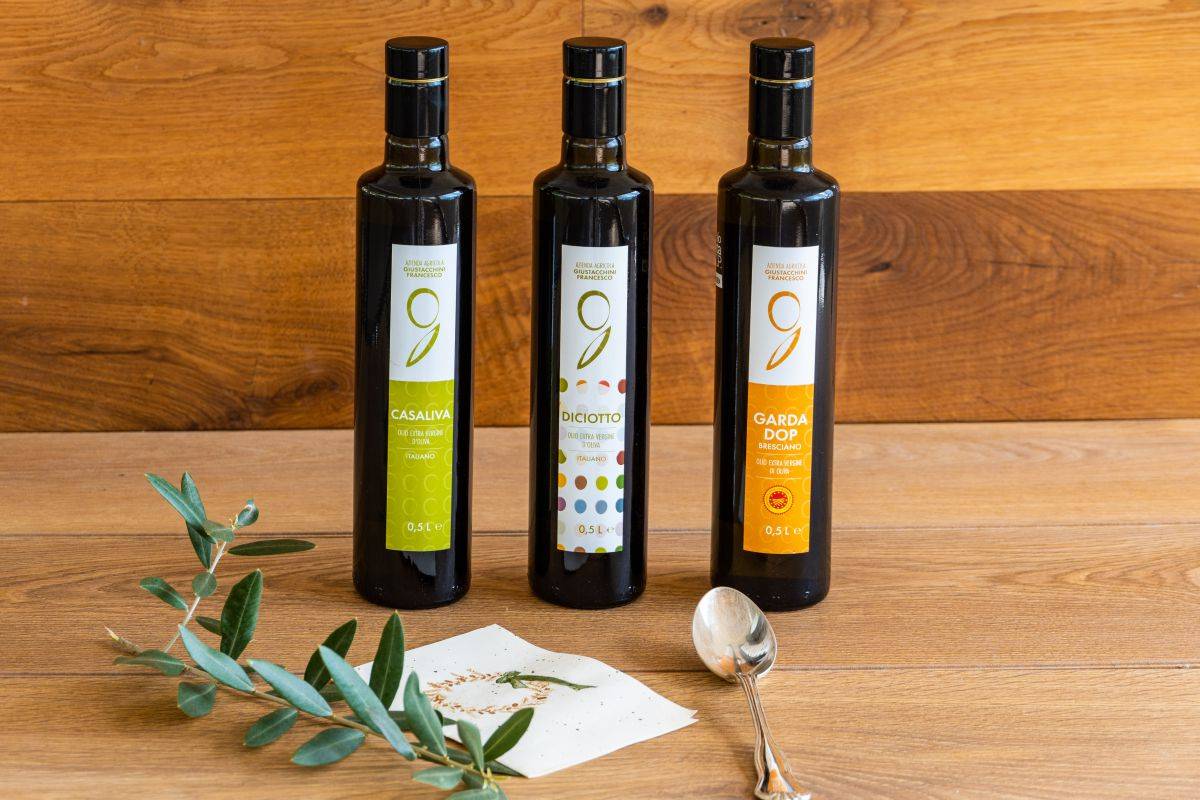
Want to know more about oil? Here is our advice!
There are now many oil-tasting courses, for professionals or those simply curious about the rules of excellence.
Our advice, for a first approach or for those who want to continue to train their senses, is to buy an Evokebox from our friend Maria Paola Gabusi, Panel Leader and creator of the Leone d'oro International, the oldest and most selective international competition for extra virgin olive oils.
"This is not a box...A precious treasure chest that holds a journey for a very few."
This is how Maria Paola describes the experience of Evokebox: a tasting kit of 10 different types of oil, to be received directly at home and discovered together. In fact, it will be her, with her 12 years of experience and expertise in the field, who will accompany you through a web link, in Italian and English, to discover 10 different worlds, scents and knowledge of a universe waiting to be discovered.
Have you had fun? Then continue your training by attending one of the Leone d'Oro courses at Maria Paola's marvellous studio in Toscolano Maderno, a paradise immersed in the nature of our lake: sensory education courses, master classes, tastings and lots of experiences that will guide you "to leaf through that infinite rainbow of nuances of which aromas and perfumes are made".










